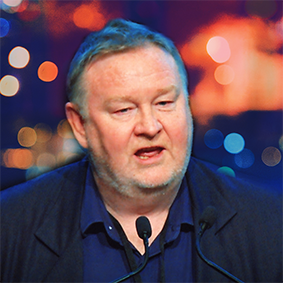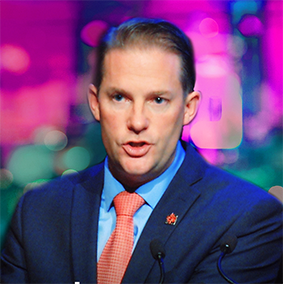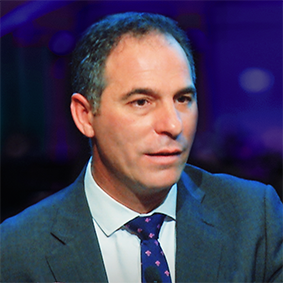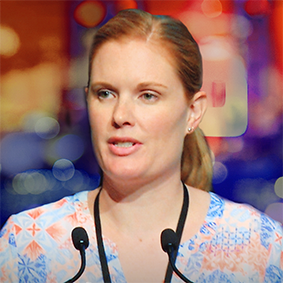ACCESS READS: WHY INCLUDE
Catia Malaquias is a practising Commercial and Public senior lawyer and also the founder and director of ‘Starting With Julius’ and co-founder of the ‘Global Alliance for Disability in Media and Entertainment’ (GADIM) and ‘All Means All: The Australian Alliance for Inclusive Education’. Passionately committed to diversity and inclusion of people with disability and inclusive education Catia believes that 40 years of research into education of students with disability has overwhelmingly established inclusive education produces superior social and academic outcomes for all students.
Malaquias makes a case for shining a light on rationalising exclusion in educational contexts and the types of language that continue to be used around this issue in Australia as contributing factors to the notion that segregation of children with disabilities is an appropriate ‘option’, despite there being no evidence to warrant the notion.
The following article foregrounds Catia Malaquias’ ideas, for collective reflection and to prompt discussion.
Catia Malaquias regards the subject of exclusion of students with disabilities in education environments as one that can polarise the community of parents of children with disability, and indeed, the wider community. Rarely, however, she notes ‘does it polarise the disabled community, who continue to fight for rights and inclusion in every area of life and whose fundamental human right it is to access an inclusive education.’
Malaquias acknowledges that judgment can be ‘clouded by cultural beliefs, pre-conceived stereotypes and subconscious bias by decision-makers in the absence of quality information and advice’ yet questions whether ‘parents should have the right to choose educational segregation (a special school, a special unit co-located with a mainstream school) as an ‘option’ for their child on the basis of their disability?’
In Australia Malaquias writes, ‘we regard parents right to determine, in the first instance, what is in the best interests of their children. When it comes to educational decisions most parents understand any decision is critical to their child’s best interests; and they want to exercise choice to give their child the best chance of success in life.’ She goes on to write,
‘When a child has a disability, the decisions that parents make are in some ways even more significant for the long-term outcomes of their child’.
Choice, Malaquias argues, ‘is presented as a natural compromise or trade-off between a sliding-scale of ‘specialist support–more segregated environments, more specialist supports available, smaller classes, higher specialist staff-student ratios–and a corresponding reduction in social and academic contact with same-age non-disabled student peers. The subtext here Malaquias points out is, ‘children who require more significant supports need more ‘specialist’ attention in more ‘specialised’ environments which is more important–and more beneficial–than social and academic learning with same-age peers in a regular school environment.’ This thinking framed by a long-history of exclusion and institutionalisation of people with disability. ‘The thing is’ Malaquias says, ‘the empirical evidence doesn’t support this view.’
And furthermore the advocate argues, the education of students with disability is not a ‘life-style choice’ to be made by parents based on ‘poor information subject to their own limiting pre-conceived expectations or guided by medical professionals conditioned to see disability as a deficit, to be ‘treated’ or advised by school administrators operating in an educational system designed to preserve the status quo.’
‘Choosing a segregated specialist classroom’ she maintains ‘is not the same as choosing a private school over a public school, or a catholic school over a non-denominational school’.
The decision to segregate is a decision that goes to the quality of education delivered, to educational opportunity and therefore to discrimination against segregated children with disability as a group.
Quality of education and equitable access to educational opportunity are not rights to be traded or compromised. They are not the same as ‘choosing between philosophies or preference based points out Malaquias. ‘The ‘special’ path,’ she says, is supported ‘by a well-meaning culture of low expectations and outcomes, too often a sugar-coated, leading to social and economic marginalisation and exclusion further entrenching outdated societal attitudes to disability.’
‘Inclusive education’ Malaquias says ‘is a human right of people with disability and not just a ‘choice’ for parents to make’.
The rights of children to an inclusive education is aligned to Article 24 of the United Nations Convention of the Rights of Persons with Disabilities to which Australia is a party.
Malaquias highlights the United Nations affirmation of the right to inclusive education:
“A fundamental human right of all learners. Notably, education is the right of the individual learner, and not, in the case of children, the right of a parent or caregiver. Parental responsibilities in this regard are subordinate to the rights of the child.”
Parental rights are not universal nor omnipotent.
In Australia, Malaquias writes, ‘government law and policy both enable and restrict educational options in a range of ways’ and she gives the example of parents not being able to select to not educate their daughters or making choices that prevent their daughters being taught academic subjects, ‘even though,’ she writes, ‘these beliefs were not uncommon that long ago and parents did exercise educational choices between girls and boys in that way. Nowadays, we see it for what it is; educational discrimination. Similarly,’ Malaquias points out, ‘children with some disabilities were once denied access to any education. As a society we no longer believe that is acceptable.’
The point Malaquias is making here is that, ‘parental choice in the context of considering segregated schooling options should be seen for what it is; a decision to concede the rights of their child to an inclusive education.’
‘In many cases’ she says ‘parents are responding to pragmatic limitations and deficiencies of the regular education system. The fact is, many children with disability and their families have very poor experiences in regular settings for a range of reasons; from ‘gatekeeping’ by schools that don’t welcome and support their child, to poor practices, safety concerns, inadequate responses to bullying and social vulnerabilities, to school cultures that are not inclusive of students with disability and their families. Ironically, these failures are sometimes attributed to “inclusive education” itself. In reality they are due to a lack of inclusiveness, not because if it.’
While parents want to make good choices for their children, when it comes to the education of students with disability Malaquias concedes ‘the range of options that some families are provided with are so poor parents are effectively forced to make the ‘least-worst’ choice– between a low-outcomes segregated setting (i.e. a special school or education support unit) that welcomes them and their child or a regular setting that fails to welcome and accommodate their child. ‘In most cases’, she says ‘parents accept segregation for their child because the regular education system did not, would not or was not expected to provide the appropriate supports and adjustments, which under Article 24 it is obliged to do.’
‘I don’t see ‘parental choice’ in this context as a free choice between ‘equal options made on a fully-informed basis. I don’t see ‘one size doesn’t fit all’ as a legitimate analogy’ she writes, ‘I see ‘parental choice’ as Hobson’s choice for many parents. It is an exercise in ‘parental concession’ where parents concede the rights of their child to an inclusive education to an education system unwilling or unable to transform itself into a system that is accessible to all children and which accommodates diverse functional needs. A system that should assume and accommodate the diverse needs of ALL children, whether or not they have a disability. Segregation is the price many parents are transacting, and their children with disabilities are paying for it.’
This sliding of students to segregated settings which Malaquias describes as being, ‘politically dressed as driven by parental choice, serves’ she says, ‘to preserve the status quo, which is a parallel segregated special system running alongside the general education system.
The flow of students to segregated settings is not evidence of parental support for segregation of their children, she argues ‘it is a symptom of how far the regular education system has to go in order for it to be a genuinely inclusive. It is irresponsible to leave such a critical life-affecting decision to ‘parental choice’. Any discussion of the issue must recognise the relevant human rights framework, the right of each child to an inclusive education and must reference now long-standing evidence-based research and information.’
—
This article is derived from Catia Malaquias’ Choosing Segregated Education; ‘Parental Choice or Parental Con? published on the Starting with Julius website (retrieved July 2018)
CONTINUE READING

WHAT IS INCLUSION
The promotion, adoption and implementation of inclusive practices, which involves changing policies, practices and attitudes within schools.

HOW WE INCLUDE
Inclusive classrooms and schools embrace universal design as the foundation for cultivating inclusive attitudes and practices.

CHANGING MINDSETS
Bringing about change one mind at a time is integral to improving the lives of people with disability.

AUSTRALIAN EXPERIENCE
Exemplar inclusive educational practices are happening in Australia. See the possibility and potential of Inclusion here and now.

WHY INCLUDE
All children have the right to be included, to be represented in, to have access to and to receive high-quality education and supports.

TEACHER IMPACT
All classroom teachers have a role in creating schools & learning environments where all children can learn and feel they belong.
YOU MIGHT LIKE TO EXPLORE ACCESS TALKS:

WHAT IS INCLUSION
The promotion, adoption and implementation of inclusive practices, which involves changing policies, practices and attitudes within schools.

HOW WE INCLUDE
Creating inclusive classrooms & schools starts with vision, policy, systems change, curriculum design and teaching practice.

WHY INCLUDE
High quality education & supports enable all students to acquire success in their education and is the basis of an inclusive life and society.

TEACHER IMPACT
All classroom teachers have a role in creating schools & learning environments where all children can learn and feel they belong.

CHANGING MINDSETS
Whole school transformation requires courage, leadership & honest reflection to identify the need for change and set about making it happen.

AUSTRALIAN EXPERIENCE
Exemplar inclusive educational practices are happening in Australia. See the possibility and potential of inclusion here and now.
A FAMILY ADVOCACY INITIATIVE
This site is edited and maintained by the Advocacy and Leadership Development team.

